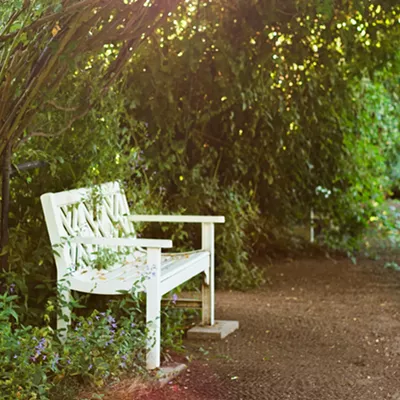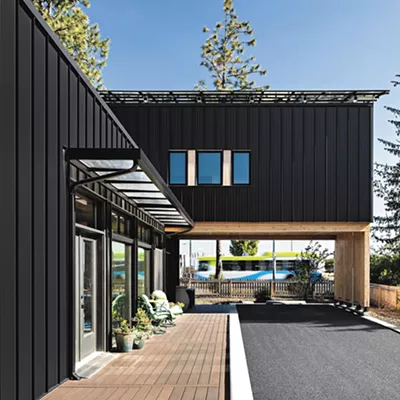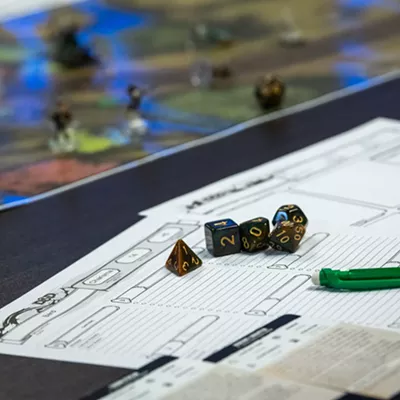A
ward-winning watercolor artist Stan Miller has taught workshops and exhibited his art in galleries around the world.On the walls of the dining room in his southeast Spokane home, Miller's recent watercolors are showcased gallery-style, with directional spot lighting and prices noted on pieces still for sale. The display presents a concise retrospective of his distinguished career and a testament to his mastery of watercolors, a challenging medium to hone.
Though Miller has taught classes and shown his watercolor portraits and landscapes around the globe — in Thailand, China, France, Italy, Mexico, Vietnam, New York City — he's had few solo shows in Spokane, his hometown since 1967. The 71-year-old artist participates yearly in the Northwest Museum of Arts & Culture's ArtFest, and earlier this year had a collection of paintings shown at Barrister Winery downtown, but says, "I haven't been in a gallery in Spokane."
"I just sold art out of my home, and I made my living from painting, mostly selling my paintings, and teaching, later in life, as I became more known," Miller continues. "I've been selling paintings in Spokane since 1973, full time, and Spokane has been very good to me."
Each year around the holidays, Miller opens his home to the public for a small art sale, hosting as many as 300 guests over the weekend-long event. This year's event is still on, though due to current public health regulations he's asking visitors to schedule a time to visit and masks must be worn.
Most of Miller's work is representational, a mix of portraits and landscapes. The people and places in his works are often so deeply detailed that at some vantages the paintings appear photographic. For this reason, some viewers may even be surprised to learn the medium is watercolor.
"My color scheme is quite earthy, it's not really colorful, and the way I paint is in a sense of quietness," he says. "The comments I get from people are that my work is quiet, serene, gentle, and familiar, yet original. I try to convey a universal emotion when I paint a portrait."
Miller prefers watercolors in a tube over the more traditional dried form softened with water. The tube-based pigments are thicker and more akin to oil paint, he notes.
As a full-time artist for five decades and counting, Miller has spent a good deal of time mentoring the next generation of watercolorists. While he's taught art at local schools, including at his alma mater, Spokane Falls Community College, Miller now teaches mostly private sessions. He currently leads a weekly class at Spokane Art Supply and volunteers to teach art to eighth-graders at All Saints Catholic School. He's also leveraged the power of social media to share watercolor techniques via recorded videos on his YouTube channel, which are free for anyone to access.
A few of Miller's past students have gone on to establish respected reputations of their own in the watercolor field, including Coeur d'Alene's Jessica Bryant and former Spokanite Linda Smith.
F
rom childhood, Miller dreamed of becoming a professional artist."I didn't think I could do it because I didn't know anyone who was a full-time artist," he recalls.
Nor did he expect watercolor to become his medium of choice.
While studying at Spokane Falls Community College in the early '70s, Miller took several fine art classes, including courses in oil and watercolor painting. He finished with a C in watercolor and vowed "never to touch it again."
"Then I did have to take [watercolor] again because all the oil painting classes were filled, and I needed more credits for my degree," he continues. "So with great trepidation I took it again, and all of my background and training helped me to better understand watercolor, and I fell in love with it."
As it turns out, it was the medium's finicky and unpredictable nature that hooked Miller.
"Painting in oil is like training your dog; painting in watercolor is like training your cat — everything about it says, 'You can't control me,' and that is what I hated about it but also what I loved about it. It's never predictable."
Upon graduating, Miller began selling his work locally anywhere he could, hanging it at malls, in beauty salons, bank and motel lobbies, and participating in sidewalk fairs. His trick to move paintings fast was pricing them incredibly low.
"I was selling a medium sized watercolor, framed up, for $40, with glass and everything," he recalls. "I was practically giving them away, but I thought I needed a lot of practice and was going to have to do this a long time before I got good."
Back then, he estimates he painted 10 to 12 hours a day, six days a week, to improve his craft and eke out a living.
"If the paintings didn't sell, to save money I'd take it out of the frame and paint on the backside," he continues. "If I could make $200 a month from selling art, I was doing it, making my living as an artist. As I got better, there was a greater demand for my paintings, and then I increased the price."
Today, one of Miller's pieces goes for anywhere between $3,000 and $5,000, and his goal is to sell every piece he creates — with the exception of one.
Painted in 1976, it hangs above the table in his cozy art studio with a window overlooking the street. A scene of a worn, wooden wagon bed overlooking an empty, dusty field, the work evokes the oeuvre of Andrew Wyeth, a major influence of Miller's. This particular piece also represents a major career moment for Miller, as it was accepted into a New York exhibition of the esteemed American Watercolor Society.
"It's the oldest painting organization in America — some of America's greatest painters exhibited with this society — and I got a painting in, and that was a huge accomplishment," he says. "That was the big green light of 'I think I can do this. I think I can make a living as an artist.'"





















